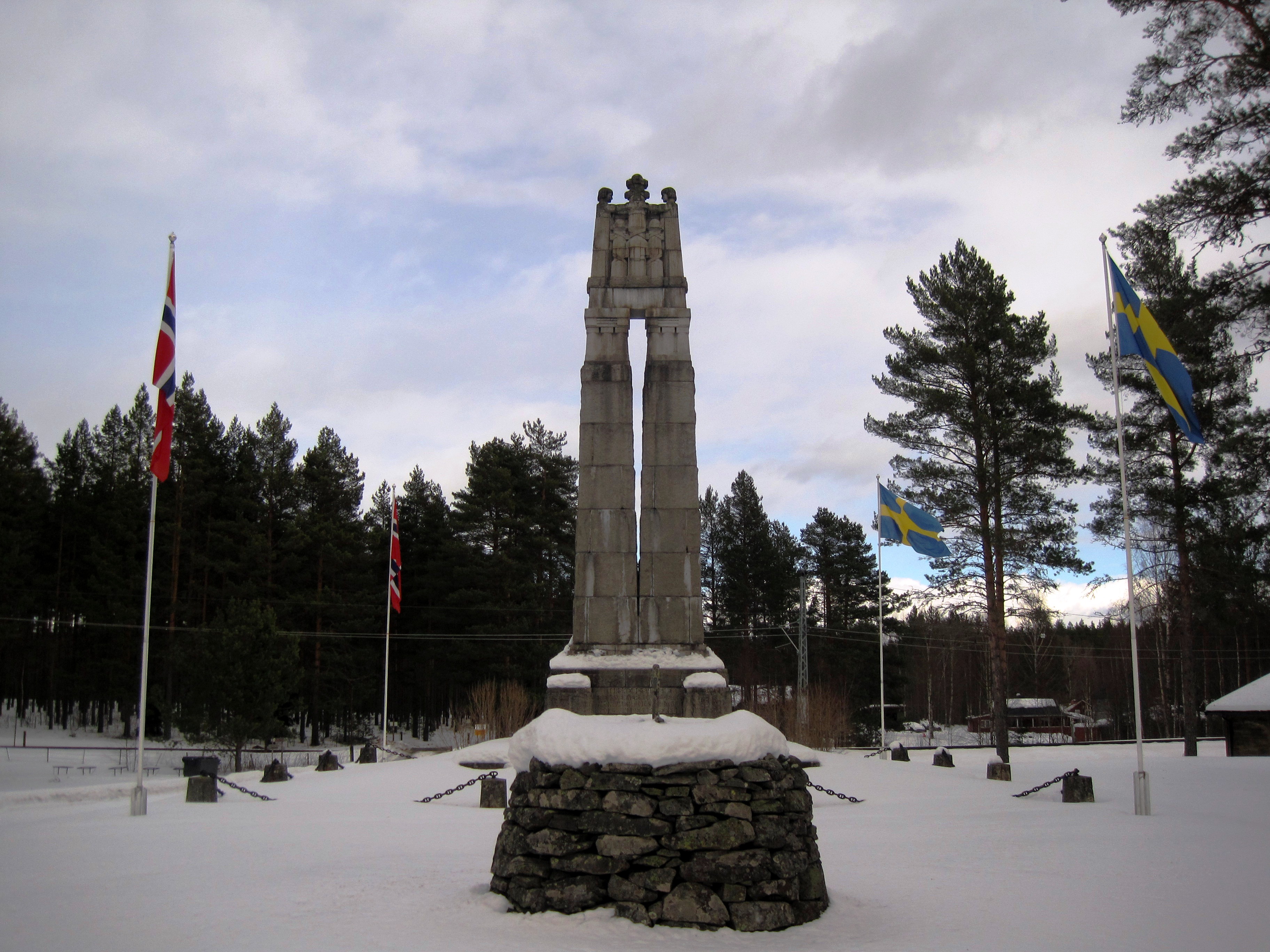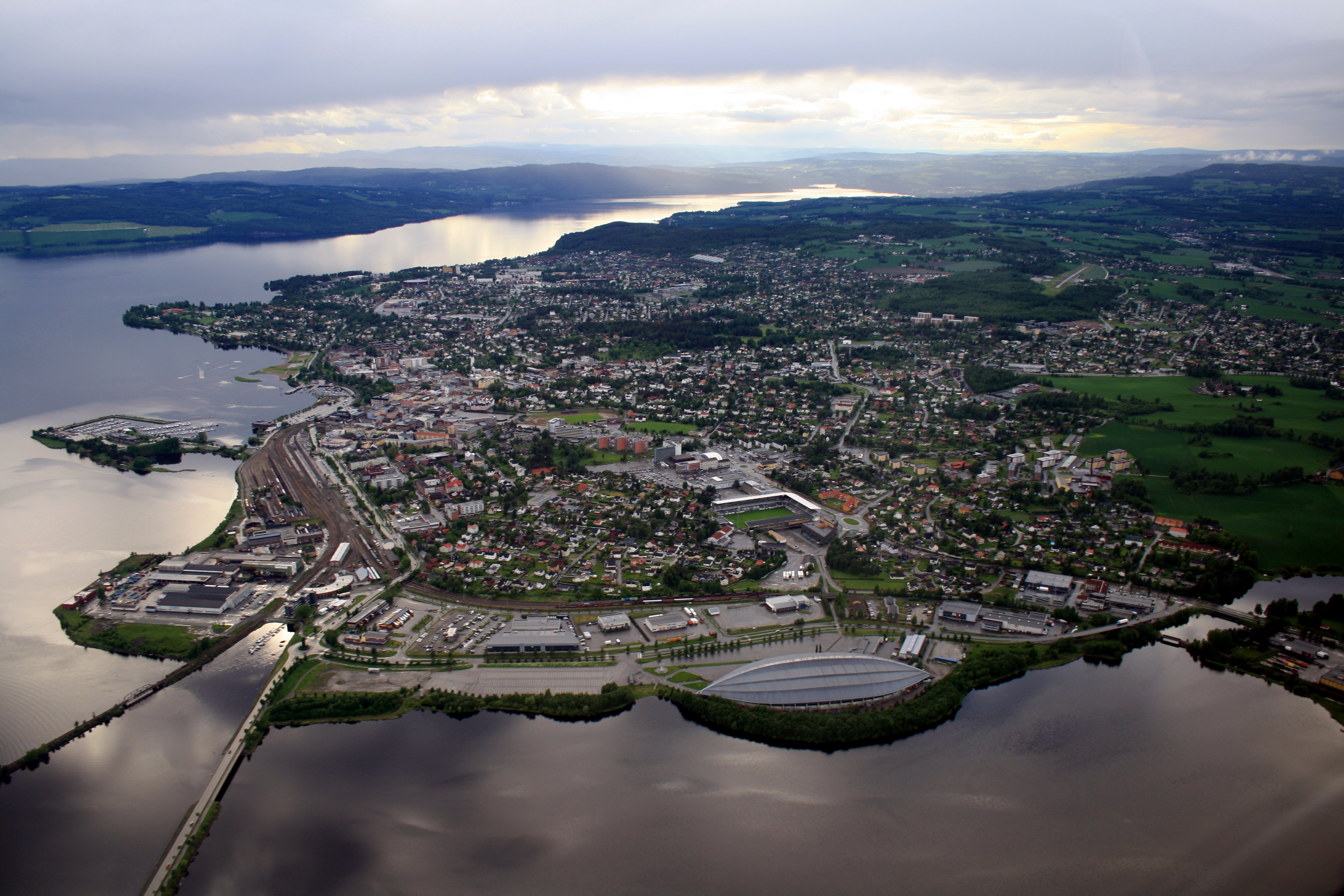|
Eidskog
Eidskog is a List of municipalities of Norway, municipality in Innlandet county, Norway. It is located in the Traditional districts of Norway, traditional district of Vinger. The administrative centre of the municipality is the village of Skotterud. Other villages in the municipality include Magnor, Matrand, and Åbogen. The municipality is the 181st largest by area out of the 356 municipalities in Norway. Eidskog is the 155th most populous municipality in Norway with a population of 6,032. The municipality's population density is and its population has decreased by 4.1% over the previous 10-year period. General information The municipality was established on 1 January 1864 when the old Vinger Municipality was divided in two: Vinger (municipality), Vinger (population: 6,226) in the north and Eidskog (population: 6,920) in the south. On 1 January 1986, the northern part of the Åbogen area (population: 14) was transferred from Kongsvinger Municipality to Eidskog Municipality. N ... [...More Info...] [...Related Items...] OR: [Wikipedia] [Google] [Baidu] |
Matrand
Matrand is a village in Eidskog Municipality in Innlandet county, Norway. The village is located approximately south of the Kongsvinger (town), town of Kongsvinger and about north of the village of Skotterud. Matrand is approximately northwest of the border with Sweden. The village is located along the Norwegian National Road 2 and the Kongsvingerbanen railway line. Battle of Matrand Matrand was host to the bloodiest battle of the entire Swedish-Norwegian War (1814), Swedish-Norwegian War of 1814. This was where Lieutenant colonel, Lieutenant Colonel Andreas Samuel Krebs (1766-1818), who was leading the Norwegian forces, attacked the temporary stronghold set up by the Swedish forces led by Major general, Major General Carl Pontus Gahn (1759–1825). Eidskog Museum The Eidskog Museum is located at Matrand. It was officially opened on 7 June 1985 as the first museum facility in Eidskog. This building had been a primary school for Matrand from 1879 until 1971. There are permanen ... [...More Info...] [...Related Items...] OR: [Wikipedia] [Google] [Baidu] |
Åbogen
Åbogen is a village in Eidskog Municipality in Innlandet county, Norway. The village is located just south of the municipal border with Kongsvinger and approximately from the border with Sweden. The village of Matrand lies about to the south of Åbogen. The Åbogen Station is a stop along the Kongsvingerbanen railway line which runs between the Lillestrøm Station in Norway and onwards to the Charlottenberg Station in Sweden. The station and related buildings were designed by architect Georg Andreas Bull Georg Andreas Bull (26 March 1829 – 1 February 1917) was a Norwegian architect and chief building inspector in Oslo, Christiania (now Oslo) for forty years. He was among the major architects in the country, and performed surveying studies and .... All the buildings date from its opening in 1865 and are of historical value. References Eidskog Villages in Innlandet {{Innlandet-geo-stub ... [...More Info...] [...Related Items...] OR: [Wikipedia] [Google] [Baidu] |
Magnor
Magnor is a village in Eidskog Municipality in Innlandet county, Norway. The village is located from the border with Sweden. The village lies along the Norwegian National Road 2 and the Kongsvingerbanen railway line. The municipal centre, Skotterud lies about to the northwest of Magnor and the Swedish village of Charlottenberg lies about to the southeast of Magnor. The village has a population (2021) of 918 and a population density of . The village is known as a production site for glass, made at Magnor Glassverk (lit. Magnor Glass Works) and also for the production of aluminium, made at Hydro Extrusion Norway. During the border wars in the middle of the 17th century, there were fortifications in the area. In 1914, the famous Peace Monument was built in Magnor. It was designed by the Swedish architect Lars Johan Lehming and funded by the Swedish Peace and Arbitration Society The Swedish Peace and Arbitration Society (SPAS) () is a non-governmental organization in Swed ... [...More Info...] [...Related Items...] OR: [Wikipedia] [Google] [Baidu] |
Skotterud
Skotterud is the administrative centre of Eidskog Municipality in Innlandet county, Norway. The village is located along the Norwegian National Road 2 and the Kongsvingerbanen railway line. Skotterud sits about south of the town of Kongsvinger and about northwest of the village of Magnor which sits just inside the border with Sweden. The village has a population (2021) of 1,360 and a population density of . The village is located about from Sweden, so there is some commercial and tourist traffic in the village. The local industry is heavily associated with forestry Forestry is the science and craft of creating, managing, planting, using, conserving and repairing forests and woodlands for associated resources for human and Natural environment, environmental benefits. Forestry is practiced in plantations and ..., including some sawmills and other timber-related businesses. References Eidskog Villages in Innlandet {{Innlandet-geo-stub ... [...More Info...] [...Related Items...] OR: [Wikipedia] [Google] [Baidu] |
Kongsvinger Municipality
Kongsvinger () is a municipality in Innlandet county, Norway. It is located in the traditional district of Glåmdal. The administrative centre of the municipality is the town of Kongsvinger. Other settlements in the municipality include Austmarka, Brandval, Lundersæter, and Roverud. The municipality is the 111th largest by area out of the 356 municipalities in Norway. Kongsvinger is the 72nd most populous municipality in Norway with a population of 17,966. The municipality's population density is and its population has increased by 1.9% over the previous 10-year period. Kongsvinger's eastern municipal boundary is the Norway–Sweden border. General information In 1854, the King designated the market town of Kongsvinger as a kjøpstad, which gave it special rights. The designation included a small patch of land on both sides of the river Glomma with an area of approximately . Because of this designation, on 7 February 1855, the town was separated from the municipality ... [...More Info...] [...Related Items...] OR: [Wikipedia] [Google] [Baidu] |
Vinger
Vinger is a traditional district in Innlandet county, Norway. The district encompasses the lands that make up Kongsvinger and Eidskog municipalities. It is generally located to the south and east of the town of Kongsvinger and the river Glomma. The main church for the region historically was Vinger Church. The area was once part of Vinger Municipality and it is also included in the Solør, Vinger og Odal prosti which is a deanery within the Church of Norway. This area was also once part of the jurisdictional area of the Vinger og Odal District Court. History Vinger was mentioned as far back as the 1260s when it was written about in the book '' Hákonar saga Hákonarsonar''. The book says that the king fought against the Ribbungene at the river Glomma and the old Hov Church. Finally, the Ribbungene were chased away towards the lake Vingersjøen and onwards towards Eidskog. During the Viking Age, there was a lot of traffic in the area with several main roads pass ... [...More Info...] [...Related Items...] OR: [Wikipedia] [Google] [Baidu] |
Innlandet
Innlandet is a Counties of Norway, county in Norway. It was created on 1 January 2020 with the merger of the old counties of Oppland and Hedmark (Jevnaker Municipality and Lunner Municipality were transferred to the neighboring county of Viken (Norwegian county), Viken on the same date). The new county has an area of , making it the largest county in Norway after the division of the old Troms og Finnmark county in 2024. The region was known as Opplandene or Opplanda since the middle ages. Historically part of Akershus, Oplandene County existed from 1757 to 1781, when it was divided into Christians County and Hedemarken County, also known as Western and Eastern Oplandene. In 1919 the two counties were renamed Oppland and Hedmark, and in 2020 they were again merged under the name Innlandet (with the exception of Jevnaker Municipality and Lunner Municipality, which went to the new county of Viken (county), Viken). This present name is a newly constructed name with no historical basi ... [...More Info...] [...Related Items...] OR: [Wikipedia] [Google] [Baidu] |
List Of Municipalities Of Norway
Municipalities in Norway are the basic unit of local government. Norway is divided into 15 administrative regions, called Counties of Norway, counties. These counties are subdivided into 357 municipality, municipalities (as of 2024). The capital city Oslo is both a county and a municipality. Municipalities are responsible for primary education (through 10th grade), outpatient Health care, health services, old age, senior citizen services, welfare spending, welfare and other Social work, social services, zoning, economic development, and municipal roads and utilities. The municipality is governed by a Municipal council (Norway), municipal council of Direct election, directly elected representatives. The mayor is Indirect election, indirectly elected by a vote of the municipal council. Law enforcement and Church of Norway, church services are provided at a national level in Norway. Municipalities are undergoing continuous change by dividing, consolidating, and adjusting boundaries. ... [...More Info...] [...Related Items...] OR: [Wikipedia] [Google] [Baidu] |
Vinger (municipality)
Vinger is a former municipality in the old Hedmark county, Norway. The municipality existed from 1838 until 1964 when it became part of Kongsvinger Municipality. The municipality was located in the Vinger region in the southern part of the county, along the border with Sweden. The administrative centre of Vinger was located in the town of Kongsvinger where Vinger Church is located (the town was not actually part of the municipality, but this was where the councils met). History The prestegjeld of Vinger was established as a municipality on 1 January 1838 (see formannskapsdistrikt law). In 1854, the King issued a royal decree that declared the village area around the Kongsvinger Fortress to be a kjøpstad. On 7 February 1855, the town of Kongsvinger (population: 472) was separated from Vinger municipality to become a separate urban municipality. Afterwards, Vinger had a population of 10,947. In 1864, the southern part of the municipality (population: 6,920) was separated fro ... [...More Info...] [...Related Items...] OR: [Wikipedia] [Google] [Baidu] |
Regardant
In heraldry, the term attitude describes the ''position'' in which a figure (animal or human) is emblazoned as a charge, a supporter, or as a crest. The attitude of a heraldic figure always precedes any reference to the tincture of the figure and its parts. Some attitudes apply only to predatory beasts, exemplified by the beast most usual to heraldry – the heraldic lion; other terms apply to docile animals, such as the doe, usually emblazoned as a "hind". Other heraldic attitudes, such as ''volant'' (flying), describe the positions of birds, exemplified by the bird most usual to heraldry – the heraldic eagle; moreover, birds also are described by the positions of their wings. The term ''naiant'' (swimming) applies to fish, swans, ducks, and geese. The term ''segreant'' is applied to the griffin, as an approximation of ''rampant'', and is applied to the dragon. Animal figures are positioned in profile, facing dexter (the viewer's left), and persons are shown ''affronté'' (f ... [...More Info...] [...Related Items...] OR: [Wikipedia] [Google] [Baidu] |
Sable (heraldry)
In British heraldry, sable () is the tincture equivalent to black. It is one of the five dark tinctures called ''colours''. Sable is portrayed in heraldic hatching by criss-crossing perpendicular lines. Sable is indicated by the abbreviation s. or sa. when a coat of arms is tricked. Etymology Sable can be traced back to Middle English, Anglo-French, and ultimately to the Middle Low German ''sabel'', which refers to a species of marten known as a sable. This is related to the Middle High German ''zobel'', which is of Slav origin and akin to the Russian ''sobol, which likewise refers to the sable. Since at least the 14th century, sable has been used as a synonym for the colour black. Both ''sable'' and ''negro'' are used for black in Spanish heraldry. In Portugal, black is known as ''negro'', and in Germany the colour is called ''schwarz''. ''Sabel'' is the spelling used in Dutch heraldry. Poetic meanings The different tinctures are traditionally associated with particular hea ... [...More Info...] [...Related Items...] OR: [Wikipedia] [Google] [Baidu] |



